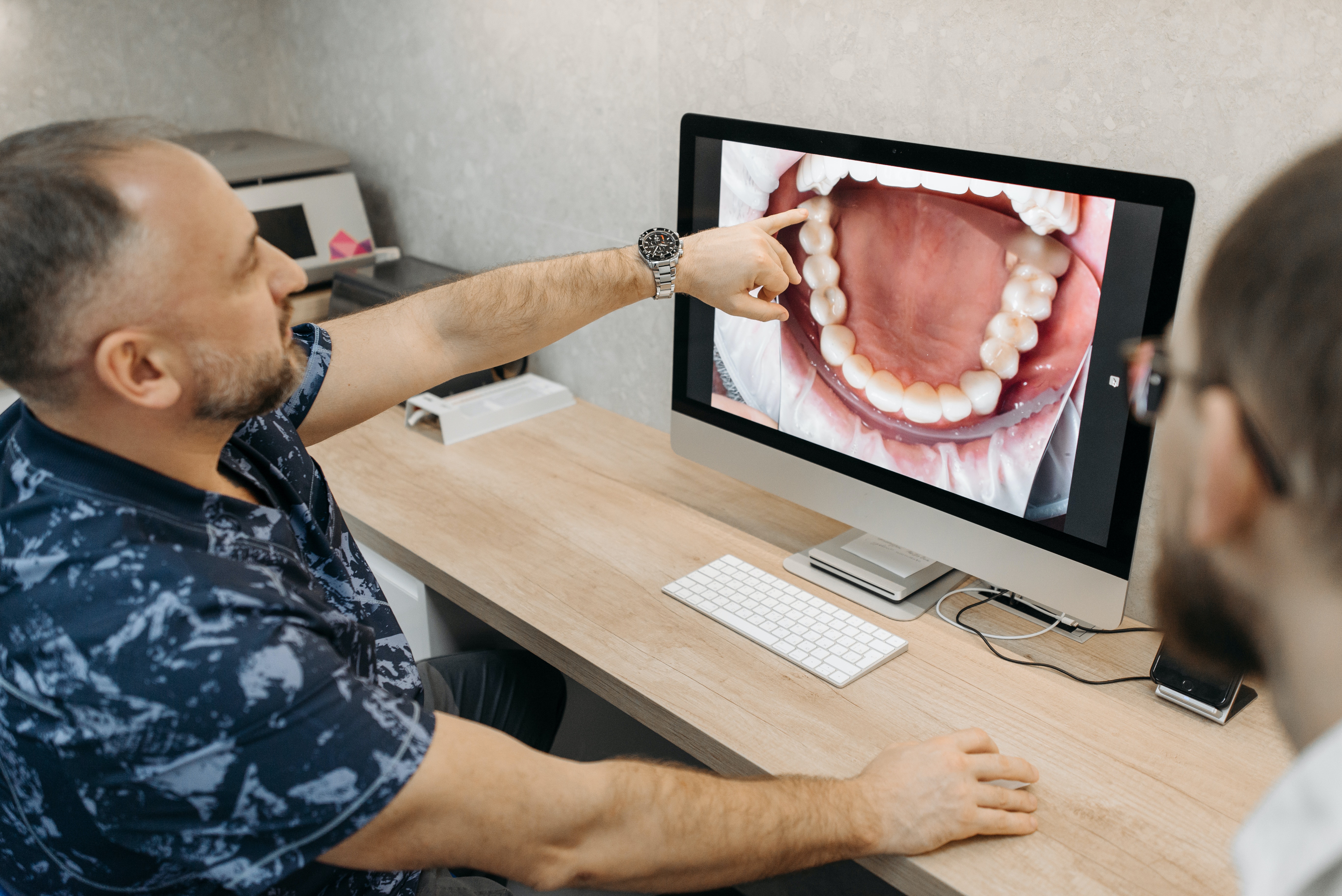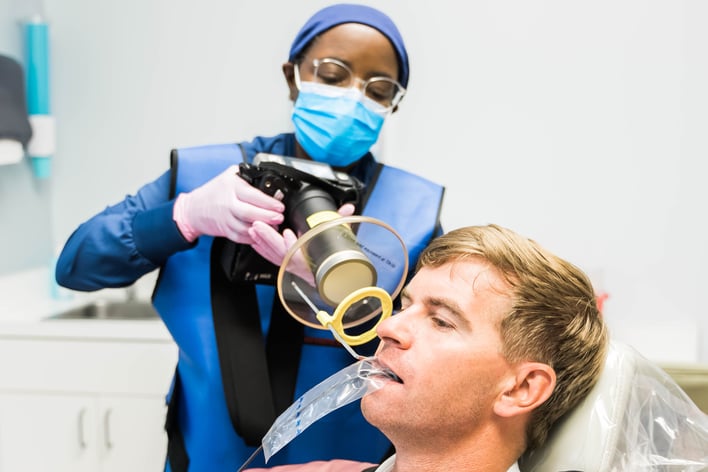2 benefits to investing in an intraoral camera for your dental practice: claims and patient trust


Pictures aren’t just worth a thousand words in the dental world, they’re worth thousands of dollars. Literally! Are you aware of just how important image attachments are, such as pictures and x-rays, when you send an insurance claim? They help you get paid by insurance companies, and are oftentimes required, depending on the procedure. The most common way dentists capture these images is through an intraoral camera. Still, many practices don't have one.
After years of working with dental clinical teams at Dental ClaimSupport, and even hiring people with clinical experience, we’ve seen the importance of having an intraoral camera at your practice. Images not only help only make the patient’s education easier but are also instrumental in collecting money from insurance quicker.
In this article, you will learn why you need an intraoral camera to help your patients understand their treatment, and why you need to provide these quality images in order to get successful payments for your insurance claims. These are two big reasons why the investment in this equipment will help your practice be a trusted place of oral care and have more financial success through insurance claim revenue.
What is an intraoral camera?
An intraoral camera is a tool dentists use to show the interior of the mouth. The picture can be taken, then immediately put on a screen to explain to the patient where an issue may lie in their mouth. It is literally a color photo showing what the naked eye sees. Therefore, it clearly conveys the condition of their mouth and the dentist can explain what procedure should be done.
Intraoral cameras have a wide price range, but assuming your dentist prefers a high-quality product, the cost can range from $500 - $3,000. Doing research on different brands is an important step in finding the right tool for your dental practice, and the benefits of taking this step to buy the camera can be huge.

2 benefits of investing in an intraoral camera
It may seem like an unnecessary cost at first, but the benefits can create a better patient experience while also getting your dental practice paid by insurance.
1. Better patient treatment experience
One of the biggest advantages of having an intraoral camera is to show your patient exactly what kind of care they are receiving.
The patient may nod their head and say they understand why they need a crown, but do they really? If it doesn’t hurt, then surely it can’t be that bad, right? I bet if you analyze your treatment acceptance rate, you’ll have your answer. Part of your job as a clinician is to educate your patients utilizing the tell, show, tell methodology.
By snapping a picture with your intraoral camera, and displaying it up on a screen, and showing them exactly what was going on in their mouth, you’re allowing them to see what you see! It gives the patient the “ah-ha” moment where you can gain their confidence in knowing the validity of the treatment, recommended by you and confirmed by your dentist.
Not only is early detection key in saving costs regarding treatment, but it’s also pivotal in reducing pain and spotting suspicious (sometimes life-saving) lesions. Most patients, after viewing intraoral pictures of their teeth and gums, agreed with the necessity of the recommended treatment.
This means you have gained their trust, and they’re ready to move forward with any necessary procedures. Not only do you have an at-ease patient getting the full picture, but you have a patient that will likely return to your practice for further dental needs.
2. Avoid insurance claim denials by having quality pictures and x-rays attached
So your patient understands that they need the dental care you recommend, now that you’ve shown them via a photo or x-ray. Great! Now comes the next most commonly asked question: “Will my insurance cover it?”
The answer every single time should be, “YES!” (as long as it is a covered benefit within their plan). As we know, however, that isn’t always the case. The most common procedure code denial we have seen is D2950 (core build-up) and D2740 (crown) when a tooth fracture is present.
If you want to appeal a denied claim, should you close out the claim? Learn the best strategy in our Learning Center!
For example, say tooth #30 presented with recurrent caries and a large crack on the distal surface around the existing amalgam. You submitted an insurance claim for the treatment you performed, yet the insurance company denied payment due to lack of necessity. Wait, what?
You’re probably thinking, “How can that be? I sent them everything required for the claim! My patient clearly needed this treatment!” Well, if you sent in a radiograph (x-ray) with a narrative, you didn’t give the dental consultants with the insurance company the opportunity to actually “see” the fracture. In other words, they need a picture!
How intraoral cameras help prove the need to treat fractures and decay
We all know most fractures and sometimes decay, depending on the surface of the tooth, are not evident on radiographs. So to the insurance company, your radiographs don’t show proof of what you said you observed clinically. It’s an unfortunate truth, but insurance companies succeed in business by preserving as much money within their organization as possible. In other words, denying your claims lets them keep more money.
This is a key example of why you need intraoral imaging. Although it is not required by most plans, if you submit an intraoral photo with the fracture or decay circled and a narrative that clearly supports the treatment needed, 9 times out of 10, they will send you payment for your claim upon initial submission. Getting a claim paid on the first try is music to every dental professional’s ears!
If your claim is still denied after you’ve attached a picture, you have a much better case for appealing the initial denial, due to the fact that you included intraoral images. They leave little room for doubt.
.jpg?width=651&name=DSC05610%20(1).jpg)
Don’t give the insurance companies a reason to deny your claims
Your patients have a right to understand why they are paying for a procedure, plus they should know the overall condition of their oral health. It is only fair that they make educated decisions about the health of their teeth.
As for your dental team, you have a right to be paid by insurance companies for covered procedures your patients agreed to for their health. Having the right equipment to prove that a service was needed when sending insurance claims is key to avoiding denials. If you’re not utilizing intraoral imaging in your practice, we highly suggest you make the investment and enjoy all the benefits.
Fight for your patients and your practice when it comes to dental insurance. If you’d like our help, we’d be more than happy to fight for you too, and you can improve your success rate when you have the proper equipment.
As you know, sometimes claims are just still denied outright, and you need to know how to appeal and overturn these denials. Learn 5 simple tips to win insurance appeals in our Learning Center to get the money insurance companies owe you.
Related Posts
Dental revenue resources from Dental Claim Support

